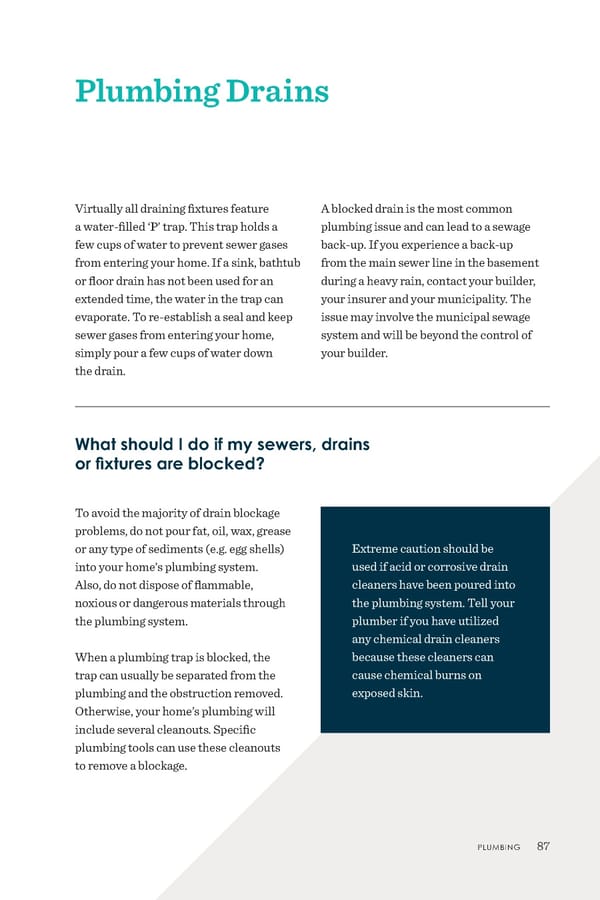Plumbing Drains Virtually all draining fixtures feature a water-filled ‘P’ trap. This trap holds a few cups of water to prevent sewer gases from entering your home. If a sink, bathtub or floor drain has not been used for an extended time, the water in the trap can evaporate. To re-establish a seal and keep sewer gases from entering your home, simply pour a few cups of water down the drain. To avoid the majority of drain blockage problems, do not pour fat, oil, wax, grease or any type of sediments (e.g. egg shells) into your home’s plumbing system. Also, do not dispose of flammable, noxious or dangerous materials through the plumbing system. When a plumbing trap is blocked, the trap can usually be separated from the plumbing and the obstruction removed. Otherwise, your home’s plumbing will include several cleanouts. Specific plumbing tools can use these cleanouts to remove a blockage. A blocked drain is the most common plumbing issue and can lead to a sewage back-up. If you experience a back-up from the main sewer line in the basement during a heavy rain, contact your builder, your insurer and your municipality. The issue may involve the municipal sewage system and will be beyond the control of your builder. What should I do if my sewers, drains or fixtures are blocked? Extreme caution should be used if acid or corrosive drain cleaners have been poured into the plumbing system. Tell your plumber if you have utilized any chemical drain cleaners because these cleaners can cause chemical burns on exposed skin. PLUMBING 87
 ANHWP Care & Maintenance Guide 2022 Page 88 Page 90
ANHWP Care & Maintenance Guide 2022 Page 88 Page 90